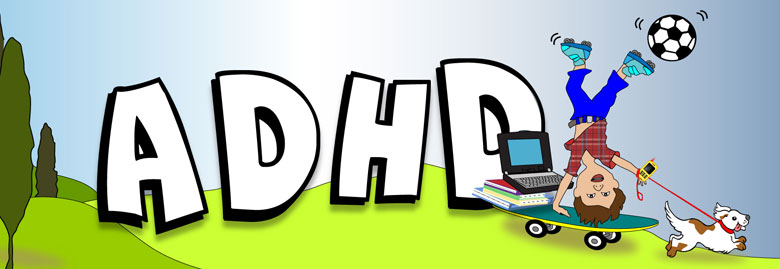Fair does not mean ‘everyone gets the same treatment’, what it really means is ‘everyone gets what he or she needs’ – Richard Lavoie
CLASSROOM AND EXAM ACCOMMODATIONS
These classroom accommodations can help your children to demonstrate their knowledge. Their effectiveness varies from child to child and according to the perspective of the evaluator. Please note that these are possible accommodations; generally, they may be given by the school as appropriate to the age and needs of the child. All of these accommodations should be discussed with the appropriate school staff to bring them to their attention. Oral testing Tests are read to the student (or provided pre-recorded on audio tape from Junior High school on), and the student is allowed to give answers orally (or tape record his/her answers). Untimed or extended time tests (25% more time) Dyslexic students do not perform well under time pressure. It also takes them longer to read the questions, compose the answer in their head, and get it down on paper. Ignoring spelling or reduction of size of spelling tests (Hebrew/English) Many teachers will accept a spelling test given in a tutoring session as a replacement for the classroom test, or only grade a classroom spelling test on a small number of pre–determined words. Don’t force oral reading Teachers should never force students with dyslexia to read aloud in front of the class. If for some reason this is absolutely necessary, warn the students in advance and show them exactly which passage they will have to read so that they can practice ahead of time. (The students should have the opportunity to have time in the quiet of their homes to practice.) Accept dictated homework Some Dyslexic/Dysgraphic students can dictate answers much more easily and quickly than they can write them down. Allow parents to act as scribes until penmanship is easier. In some cases, the students are allowed or encouraged to use a laptop. Reduce homework load Many teachers create a homework assignment by estimating how long it would take a “normal” student to complete it. They may not realize that it takes a dyslexic student 3 to 4 times longer to complete the same assignment. Teachers should agree to a maximum time to spend on homework. Parents should sign the end of the homework page showing the amount of time spent on the assignment. A parent can ask the teacher to have the student complete fewer questions for homework and have these questions graded as a complete assignment. It is important for a child in elementary school to do homework and slowly become accustomed to increasing his ability to complete homework. Grade on content, not spelling and handwriting Some teachers take spelling and handwriting into consideration when assigning a grade. For dyslexic children, this is not appropriate. Teachers should be asked to grade only on the content of an assignment. Reduce copying tasks It takes dyslexic students longer to copy information from the board, and if they have dysgraphia, they may not be able to read their notes. In some cases, the teacher may be willing to give a photocopy to the student. A fellow student could be asked to act as a scribe using NCR paper (sometimes called carbonless copy paper.) or simply photocopy the page. Most schools have a machine on the premises. In elementary school, a student may be required to write a sentence from the blackboard and the teacher may be willing to complete the rest at the end of class. Writing disabilities Tester re-writes test material. Tester writes test answers for the examinee. Alternate assignments Teachers should offer alternative ways to show mastery of material other than a long written paper. In most cases, this would be oral. (Some other ideas include video presentations, dioramas, collages, or debates.) Avoid or reduce essay tests Use match up, fill-in-the-blank, or short answer formats for tests. List vocabulary words for fill-in-the-blank sections at the top of the exam. Multiple-choice questions are also difficult for dyslexic students due to the volume of reading required to answer them correctly. Conduct a class review session before the test Also, provide the students with a study guide containing key terms and concepts. Ask the student how he/she learns best Often, dyslexic students can explain strategies and techniques that help them learn. The teacher can usually incorporate them easily into a classroom. Maths It is important to read the instructions aloud to enable the student to fully understand what is required. Create an extended list of written math equations. Eliminate math and substitute science. ADD/ADHD Breaks Disruption in the classroom can cause frustration and anger to the ADD/ADHD student. It is advisable to pre-empt this situation and have the teacher write a short contract with the student regarding breaks,. if the student is unable to stay in the class for long periods, it would be advisable to allow him to leave the classroom for a short period , (5 minutes) giving him the responsibility to come back. There should also be a limit to how many times this may occur during one class period. English (as a second language) Examinee records test answers on tape recorder due to writing disabilities. Examinee receives recorded test questions (on tape recorder due to reading disability. Examiner reads to student. Test edited by school staff. Oral testing (in English). ADD/ADHD Organization Make sure that all books for each subject are colour coded so that the elementary student will be able to take responsibility for his own books both at home and in school. All pencils should be sharpened before commencing each day. Support for the Student’s Self-Esteem Increasing the self-esteem of the student. Have the teacher allow the student to prepare a few pages before the lesson and let the student be the first to answer questions in class. This will allow the student to gain the respect of his fellow students and encourage him to study. Answering Questions It is important to help a student with social cues. A teacher can accommodate a student by making sure that the ADD student is called on as one of the first to answer at the beginning of the year and progressively taught to wait a little longer. It is important to include such a child in every lesson, so that the child doesn’t lose interest. Click to listen highlighted text! Fair does not mean ‘everyone gets the same treatment’, what it really means is ‘everyone gets what he or she needs’ – Richard Lavoie CLASSROOM AND EXAM ACCOMMODATIONS These classroom accommodations can help your children to demonstrate their knowledge. Their effectiveness varies from child to child and according to the perspective of the evaluator. Please note that these are possible accommodations; generally, they may be given by the school as appropriate to the age and needs of the child. All of these accommodations should be discussed with the appropriate school staff to bring them to their attention. Oral testing Tests are read to the student (or provided pre-recorded on audio tape from Junior High school on), and the student is allowed to give answers orally (or tape record his/her answers). Untimed or extended time tests (25% more time) Dyslexic students do not perform well under time pressure. It also takes them longer to read the questions, compose the answer in their head, and get it down on paper. Ignoring spelling or reduction of size of spelling tests (Hebrew/English) Many teachers will accept a spelling test given in a tutoring session as a replacement for the classroom test, or only grade a classroom spelling test on a small number of pre–determined words. Don’t force oral reading Teachers should never force students with dyslexia to read aloud in front of the class. If for some reason this is absolutely necessary, warn the students in advance and show them exactly which passage they will have to read so that they can practice ahead of time. (The students should have the opportunity to have time in the quiet of their homes to practice.) Accept dictated homework Some Dyslexic/Dysgraphic students can dictate answers much more easily and quickly than they can write them down. Allow parents to act as scribes until penmanship is easier. In some cases, the students are allowed or encouraged to use a laptop. Reduce homework load Many teachers create a homework assignment by estimating how long it would take a “normal” student to complete it. They may not realize that it takes a dyslexic student 3 to 4 times longer to complete the same assignment. Teachers should agree to a maximum time to spend on homework. Parents should sign the end of the homework page showing the amount of time spent on the assignment. A parent can ask the teacher to have the student complete fewer questions for homework and have these questions graded as a complete assignment. It is important for a child in elementary school to do homework and slowly become accustomed to increasing his ability to complete homework. Grade on content, not spelling and handwriting Some teachers take spelling and handwriting into consideration when assigning a grade. For dyslexic children, this is not appropriate. Teachers should be asked to grade only on the content of an assignment. Reduce copying tasks It takes dyslexic students longer to copy information from the board, and if they have dysgraphia, they may not be able to read their notes. In some cases, the teacher may be willing to give a photocopy to the student. A fellow student could be asked to act as a scribe using NCR paper (sometimes called carbonless copy paper.) or simply photocopy the page. Most schools have a machine on the premises. In elementary school, a student may be required to write a sentence from the blackboard and the teacher may be willing to complete the rest at the end of class. Writing disabilities Tester re-writes test material. Tester writes test answers for the examinee. Alternate assignments Teachers should offer alternative ways to show mastery of material other than a long written paper. In most cases, this would be oral. (Some other ideas include video presentations, dioramas, collages, or debates.) Avoid or reduce essay tests Use match up, fill-in-the-blank, or short answer formats for tests. List vocabulary words for fill-in-the-blank sections at the top of the exam. Multiple-choice questions are also difficult for dyslexic students due to the volume of reading required to answer them correctly. Conduct a class review session before the test Also, provide the students with a study guide containing key terms and concepts. Ask the student how he/she learns best Often, dyslexic students can explain strategies and techniques that help them learn. The teacher can usually incorporate them easily into a classroom. Maths It is important to read the instructions aloud to enable the student to fully understand what is required. Create an extended list of written math equations. Eliminate math and substitute science. ADD/ADHD Breaks Disruption in the classroom can cause frustration and anger to the ADD/ADHD student. It is advisable to pre-empt this situation and have the teacher write a short contract with the student regarding breaks,. if the student is unable to stay in the class for long periods, it would be advisable to allow him to leave the classroom for a short period , (5 minutes) giving him the responsibility to come back. There should also be a limit to how many times this may occur during one class period. English (as a second language) Examinee records test answers on tape recorder due to writing disabilities. Examinee receives recorded test questions (on tape recorder due to reading disability. Examiner reads to student. Test edited by school staff. Oral testing (in English). ADD/ADHD Organization Make sure that all books for each subject are colour coded so that the elementary student will be able to take responsibility for his own books both at home and in school. All pencils should be sharpened before commencing each day. Support for the Student’s Self-Esteem Increasing the self-esteem of the student. Have the teacher allow the student to prepare a few pages before the lesson and let the student be the first to answer questions in class. This will allow the student to gain the respect of his fellow students and encourage him to study. Answering Questions It is important to help a student with social cues. A teacher can accommodate a student by making sure that the ADD student is called on as one of the first to answer at the beginning of the year and progressively taught to wait a little longer. It is important to include such a child in every lesson, so that the child doesn’t lose interest. Powered By GSpeech






